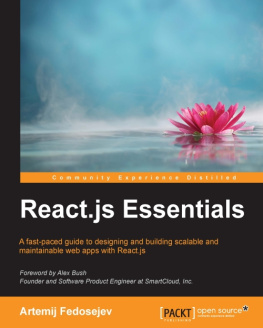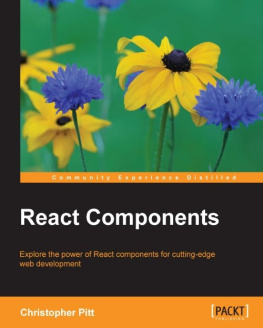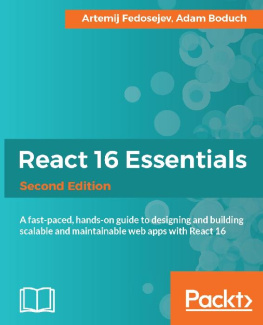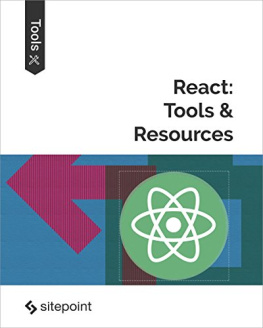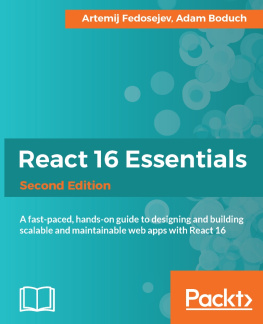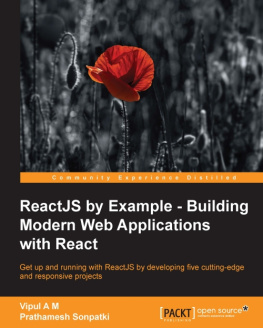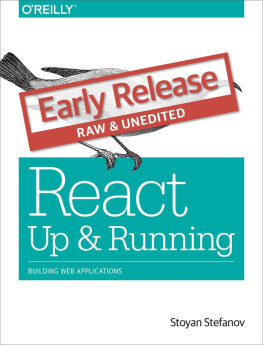Fedosejev Artemij. - React.js Essentials
Here you can read online Fedosejev Artemij. - React.js Essentials full text of the book (entire story) in english for free. Download pdf and epub, get meaning, cover and reviews about this ebook. genre: Computer. Description of the work, (preface) as well as reviews are available. Best literature library LitArk.com created for fans of good reading and offers a wide selection of genres:
Romance novel
Science fiction
Adventure
Detective
Science
History
Home and family
Prose
Art
Politics
Computer
Non-fiction
Religion
Business
Children
Humor
Choose a favorite category and find really read worthwhile books. Enjoy immersion in the world of imagination, feel the emotions of the characters or learn something new for yourself, make an fascinating discovery.
- Book:React.js Essentials
- Author:
- Genre:
- Rating:4 / 5
- Favourites:Add to favourites
- Your mark:
React.js Essentials: summary, description and annotation
We offer to read an annotation, description, summary or preface (depends on what the author of the book "React.js Essentials" wrote himself). If you haven't found the necessary information about the book — write in the comments, we will try to find it.
.A fast-paced guide to designing and building scalable and maintainable web apps with React.js.Building web applications with maintainable and performant user interfaces is a challenge that many have faced for more than a decade, but no one has risen to this challenge quite like React.js. Today React.js is used by Facebook, Instagram, Khan Academy, and Imperial College London, to name a few. Many new users recognize the benefits of React.js and adopt it in their own projects, forming a fast-growing community. The speed at which React.js has evolved promises a bright future for those who invest in learning it today.React.js Essentials will take you on a fast-paced journey through building your own maintainable React.js application. Begin by exploring how you can create single and multiple user interface elements. Create stateless and stateful components and make them reactive, learn to interact between your components and lifecycle methods and gauge how to effectively integrate your user interface components with other JavaScript libraries. Delve deep into the core elements of the Flux architecture and learn how to manage your application using stores. Finish by going that extra mile with the Jest test framework, running multiple tests on your application and find solutions to scale it further without complexity.What You Will Learn:
Install powerful React.js tools to make development much more efficient;
Create React elements with properties and children;
Get started with stateless and stateful React components;
Use JSX to speed up your React.js development process;
Add reactivity to your React components with lifecycle methods;
Integrate your React components with other JavaScript libraries;
Utilize the Flux application architecture with your React components;
Test your React components with Jest test framework.Build maintainable and performant user interfaces for your web applications using React.js.
Create reusable React.js components to save time and effort in maintaining your user interfaces.
Learn how to build a ready-to-deploy React.js web application, following our step-by-step tutorial.Who This Book Is For:
If youre a front-end developer with knowledge of jQuery and its libraries, along with frameworks, such as Angular.JS and Backbone.JS, or native JavaScript development, and you wish to use the fastest web user interface library there is, then this book is ideal for you.
Fedosejev Artemij.: author's other books
Who wrote React.js Essentials? Find out the surname, the name of the author of the book and a list of all author's works by series.

